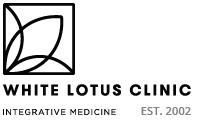
Gaining muscle with a hormonal condition like menopause, PCOS, insulin resistance is a multifaceted process that involves proper nutrition, exercise, supplementation, and recovery. This article explores evidence-based strategies for achieving these goals, with a focus on protein intake, creatine supplementation, exercise routines, considerations for insulin resistance, and the importance of rest and recovery. A list of high-protein foods with their respective protein content is also provided.
Protein Intake for Muscle Growth
Protein is the cornerstone of muscle repair and growth, providing the amino acids necessary for muscle protein synthesis (MPS). The International Society of Sports Nutrition recommends a daily protein intake of 1.6–2.2 g per kg of body weight for individuals aiming to build or maintain muscle mass. For example, a 70 kg individual should aim for 112–154 g of protein daily.
Reference: Morton, R. W., et al. (2018). A systematic review, meta-analysis and meta-regression of the effect of protein supplementation on resistance training-induced gains in muscle mass and strength in healthy adults. British Journal of Sports Medicine, 52(6), 376–384. doi:10.1136/bjsports-2017-097608.
Creatine Supplementation
Creatine monohydrate is one of the most researched and effective supplements for enhancing muscle mass and strength. It increases phosphocreatine stores in muscles, improving energy availability during high-intensity exercise. A typical dosing protocol is 5 g/day in water. Long-term use is safe and effective for most individuals, with benefits including increased muscle fiber size and improved recovery.
Reference: Kreider, R. B., et al. (2017). International Society of Sports Nutrition position stand: Safety and efficacy of creatine supplementation in exercise, sport, and medicine. Journal of the International Society of Sports Nutrition, 14, 18. doi:10.1186/s12970-017-0173-z.
Exercise for Muscle Growth
Resistance training is essential for stimulating muscle hypertrophy. A well-structured program should include:
- Compound movements: Exercises like squats, deadlifts, bench presses, and pull-ups target multiple muscle groups and maximize growth.
- Progressive overload: Gradually increase weight, reps, or intensity to challenge muscles.
- Volume and frequency: Aim for 3–5 sets of 6–12 reps per exercise, training each muscle group 2–3 times per week.
A mix of hypertrophy-focused (8–12 reps) and strength-focused (4–6 reps) training optimizes results. Cardiovascular exercise can be included but should not dominate the program, as excessive cardio may impair muscle recovery.
Reference: Schoenfeld, B. J., et al. (2016). Effects of resistance training frequency on measures of muscle hypertrophy: A systematic review and meta-analysis. Sports Medicine, 46(11), 1689–1697. doi:10.1007/s40279-016-0543-8.
Considerations for Insulin Resistance
Insulin resistance can complicate muscle growth by impairing nutrient uptake in muscle cells. However, resistance training itself improves insulin sensitivity by increasing glucose transporter (GLUT4) expression. To manage insulin resistance:
- Work on lower body strength – the larger leg muscles are insurance against insulin resistance.
- Prioritize complex carbohydrates over simple carbs: Choose whole grains, legumes, and vegetables to stabilize blood sugar.
- Time carbohydrate intake: Consume carbs close to workouts when insulin sensitivity is highest.
- Monitor protein quality: High-quality proteins (e.g., animal protein, eggs) support MPS without spiking blood sugar.
Individuals with insulin resistance should consult a healthcare provider to tailor nutrition and exercise plans, as severe cases may require medical intervention.
Reference: Srikanthan, P., & Karlamangla, A. S. (2011). Relative muscle mass is inversely associated with insulin resistance and prediabetes. Findings from the third National Health and Nutrition Examination Survey. The Journal of Clinical Endocrinology & Metabolism, 96(9), 2898–2903. doi:10.1210/jc.2011-0435.
Rest and Recovery Days
Rest and recovery are critical for muscle repair and growth. During rest, muscle fibers rebuild stronger through MPS. Key strategies include:
- Sleep: Aim for 7–9 hours of quality sleep per night to optimize growth hormone release and recovery.
- Rest days: Include 1–2 rest or active recovery days per week, focusing on light activities like walking or yoga to promote blood flow without overloading muscles.
- Deload weeks: Every 4–6 weeks, reduce training intensity or volume for a week to prevent overtraining.
Overtraining can lead to elevated cortisol levels, which may break down muscle tissue and hinder progress.
Reference: Dattilo, M., et al. (2011). Sleep and muscle recovery: Endocrinological and molecular basis for a new and promising hypothesis. Medical Hypotheses, 77(2), 220–222. doi:10.1016/j.mehy.2011.04.017.
High-Protein Foods
Below is a list of high-protein foods with approximate protein content per 100 g serving:
Food Item | Protein (g/100 g) |
|---|---|
Chicken breast | 31 |
Lean beef | 26 |
Salmon | 25 |
Eggs (whole) | 13 |
Greek yogurt (plain) | 10 |
Cottage cheese | 11 |
Lentils (cooked) | 9 |
Tofu | 8 |
Quinoa (cooked) | 4.4 |
Almonds | 21 |
Reference: USDA FoodData Central. (2023). Available at: https://fdc.nal.usda.gov/.
Conclusion
Maintaining or growing lean muscle mass requires a balanced approach of adequate protein intake (1.6–2.2 g/kg body weight), strategic creatine supplementation (5 g/day maintenance), resistance training with progressive overload, and sufficient rest (7–9 hours sleep, 1–2 rest days/week). For those with insulin resistance, prioritizing complex carbohydrates and post-workout nutrition can enhance results. By incorporating high-protein foods and following evidence-based practices, individuals can achieve sustainable muscle growth and maintenance.

